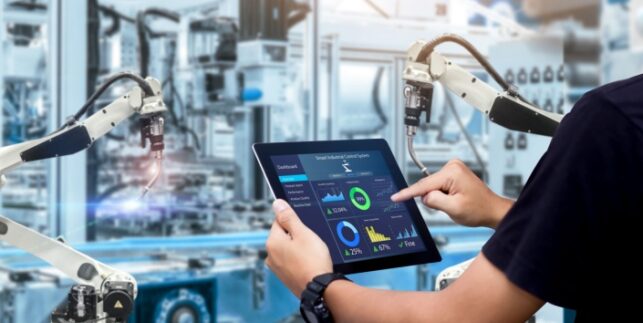Matics Webinar Recap: McKinsey’s Approach to Operational Excellence Transformation

Matics recently had the exciting opportunity to host a live webinar discussing the why and how behind operational excellence transformations in manufacturing.
Moderated by Matics Business Development Manager Elie Slama, the webinar features some great insights from McKinsey & Co. Associate Partner Ariel Davidson and Matics Consulting Managing Director for the UK & Eire, Zacchary Couldrick.
This interesting discussion highlights the need for transformation in modern companies, the key criteria they need to consider, how leadership plays a vital role, and much more.
You can check out the full webinar here, or read on to find out a bit more about some of the key points.
Key takeaway 1: Why Manufacturers Need Operational Excellence Transformations
Ariel Davidson provides a number of points highlighting the need for companies to take on operational excellence transformations. He highlights the rapid onset of new technologies over the past decades and shows how this has left many companies unable to adapt quickly enough to stay competitive.
Companies need to take a different approach to these transformations if they’re going to succeed. Instead of focusing solely on new tools and solutions, Davidson emphasizes that a true operational excellence transformation is cultural, involving a completely integrated system of principles, practices, and methods.
Key Takeaway 2: The Three Dimensions of Operational Excellence Transformation
Davidson delves into the three systems that companies need to focus on if they’re going to successfully change their culture into one geared toward operational excellence.
- The Technical System: A company’s physical assets and resources that are used to create value
- The Management System: The structures and processes that manage the technical system
- The People System: The way that people think and behave in the workplace
An effective operational excellence transformation relies on addressing each of these categories without leaving any out. The synergy between them provides manufacturers with opportunities for further improvement, and any plan that omits one of the categories will ultimately fail to achieve its potential.
Key Takeaway 3: McKinsey’s Transformation Approach
Davidson discusses his unique insight into operational excellence transformation and the approach he takes. The transformational wave project is a 12-to-16-week sprint that is divided into three key steps.
- Diagnose: The first step develops the necessary understanding of the current state of the company. It involves identifying the KPIs that must be improved, finding the key drivers for performance loss, and taking steps to assure the buy-in of both management and employees.
- Design: The design phase beings to shape an actionable solution. Targets are defined, and an implementation plan is developed. Specific solutions and initiatives are developed to address key performance losses. The ownership of these solutions by stakeholders is defined.
- Implement: During implementation, the first benefits must be captured and communicated to keep everyone on board. There is also the need to quickly identify and correct any errors or misconceptions from the design phase.
Each of these steps is vital to setting the foundation for continuous improvement that an operational excellence transformation needs to succeed.
Key Takeaway 4: Making Effective Use of Leadership
Davidson highlights the importance of leadership during the transformation. In order for a manufacturer to enjoy long-term continuous improvement, they require strong leadership at the start to lead by example and set the process on the right track.
One key example of the role of leadership in operational excellence transformations is the use of the influence model to drive change. Davidson discusses the impact of showing, telling, teaching, and encouraging in carrying out the important behavior changes that the company requires.
He also speaks on the importance of identifying members on a team who can take on leadership and help drive change. The different combinations of the levels of skill or influence and will to change can define the ways that team members can help, or hinder, the transformation process.
Key Takeaway 5: How Matics Helps Facilitate Operational Excellence Transformation
Matic’s own Zacchary Couldrick provides insight into why factories need to change and how they can do so. He highlights the ways that Matics is helping manufacturers undergo operational excellence transformations and take a new approach to continuous improvement.
Matics provides real-time operational intelligence that makes it possible to truly understand what’s happening on the factory floor. The solution is tailored to stakeholders within an operation, providing product team members, managers, and others with the specific information and capabilities they need. The Matics solution leverages a variety of IoT and cloud innovations to help manufacturers achieve operational excellence.
Check Out the Full Webinar
These and other topics are explored in-depth during this unique operational excellence transformation webinar. You can take this opportunity to find out more about how manufacturers around the world can carry out a meaningful transformation that leaves them capable of continuous and meaningful improvement.
Click here to watch the full webinar→





